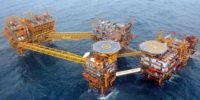The National Science Foundation confirmed on Dec. 15 that it will delay until next summer award of a long-term contract, worth at least $2 billion, to manage support logistics for the federal governments’s huge polar research program in Antarctica. Raytheon Co., site contractor since 1999, will continue under its existing contract but is not proposing this round. The new contract, originally set for award this fall and about 12.5 years in duration, has generated proposals from seven teams, including those led by AECOM Technology Corp., CH2M Hill Cos., KBR Inc. and Fluor Corp. Parsons Corp. and EG&G Inc., a unit of URS Corp., are members of teams being led by large defense contractors. Industry sources say NSF was overwhelmed by the procurement scope and response and has already replaced some contracting staff with personnel from defense agencies. NSF would not confirm the number of proposals received or its personnel changes. “We were more successful in generating competition than anticipated and find that additional time and information is needed to conduct a proper evaluation,” says Bart Bridwell, an NSF contracting officer. Firms had expected a short list by year’s end, but Bridwell says that will not occur until next year, at a time he did not specify. Teams were asked to submit additional cost information last month.

Among projects that the new contractor won't be managing is demolition of the South Pole geodesic dome, a 52-ft high and 164-ft-wide research storage facility built in 1975 by contractors of the U.S. Navy as only the site's second structure. It has already been replaced by a two-story structure built in 2008 on stilts since it is located on a moving ice sheet. Parts of the old dome will be saved for display at a new Navy Seabees museum in Port Hueneme, Calif. Work is set to wrap up before April, according to a published report last month in The Antarctic Sun.






Post a comment to this article
Report Abusive Comment